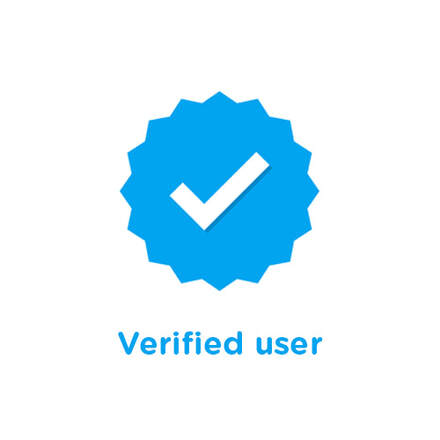Facebook Has Updated Its Verification Process. Here's What You Need To KnowSocial media platforms today are constantly evolving to meet the security requirements of a rapidly evolving virtual space. A few months ago both Instagram and Twitter posted new changes to their verification systems. This is necessary as those who are intent on breaching the security barriers are always coming up with new ways to break through. The savvy PR expert must therefore have finger on the pulse of the social media world to remain abreast of the latest developments in areas such as verification. If you’re a social media user or PR specialists you might be aware of Facebook’s updated verification process. But what does it mean for social media users, especially those who promote brands? What Facebook Verification Really Means One of the important things to know about Facebook verification is what it isn’t. In its latest update on its authentication systems, Facebook declares that as far as the platform is concerned verification has no bearing on the importance of the brand and added that verification should not be taken as an endorsement from the platform. Instead, the platform defines verification as its method of showing users the authentic and notable accounts. Essentially therefore being verified on Facebook doesn’t mean an account is important or enjoys the support of the platform. It also doesn’t mean that the posts shared by the page are verified. Instead it means the page has been vetted and found to truly represent an existing entity or person. What Facebook Verification Looks Like Verified Facebook accounts feature a white tick embedded in a blue circle. The tick typically appears next to the account’s name. Verified accounts typically attract more organic traffic and activity, which is great for brand promotion. In most other ways though, verified Facebook accounts don’t really look much different from unverified ones. The Latest Facebook Verification Requirements A few years ago Facebook did not really verify accounts. In 2018 the platform went on a drive to verify accounts associated with large followings and political ads. Then in 2020, coinciding with its acquisition of Instagram, the platform updated its verification requirements. Subsequent updates have emerged as the platform, like others of its kind works to remain viable and safe for users. As of 2022, Facebook’s verification process has become far more accessible than it was in previous years. The process is designed to prove a page’s authenticity, uniqueness, completeness and noteworthy status. Staple requirements such as the need for the account to be public, feature a profile picture, a bio and an about section and have at least one published post remain. Today, users desirous of attaining verification on Facebook will need to complete and submit an easily accessible online form. This form requires the submission of official identification documents such as a driver’s license. Other critical information required by this form include the type of account that is seeking verification, the category or industry to which it belongs, a physical address, links to unpaid non-promotional online articles that prove that the page attracts public interest. The last item on that list isn’t compulsory, but it helps a lot with verification. The goal here is to prove that the page is a legitimate representation of an individual or entity that exists in the physical world. Verification rules do not remain static in the social media world. The environment is far too dynamic for that. Facebook, like other social media platforms, will therefore continue to adjust its verification requirements to remain relevant in a swiftly changing digital environment. Users will of course need to stay abreast of these changes in order to attain and maintain verified status and all the privileges that come with it. Read Now  Social media platforms today are constantly evolving to meet the security requirements of a rapidly evolving virtual space. A few months ago both Instagram and Twitter posted new changes to their verification systems. This is necessary as those who are intent on breaching the security barriers are always coming up with new ways to break through. The savvy PR expert must therefore have finger on the pulse of the social media world to remain abreast of the latest developments in areas such as verification. If you’re a social media user or PR specialists you might be aware of Facebook’s updated verification process. But what does it mean for social media users, especially those who promote brands? What Facebook Verification Really Means One of the important things to know about Facebook verification is what it isn’t. In its latest update on its authentication systems, Facebook declares that as far as the platform is concerned verification has no bearing on the importance of the brand and added that verification should not be taken as an endorsement from the platform. Instead, the platform defines verification as its method of showing users the authentic and notable accounts. Essentially therefore being verified on Facebook doesn’t mean an account is important or enjoys the support of the platform. It also doesn’t mean that the posts shared by the page are verified. Instead it means the page has been vetted and found to truly represent an existing entity or person. What Facebook Verification Looks Like Verified Facebook accounts feature a white tick embedded in a blue circle. The tick typically appears next to the account’s name. Verified accounts typically attract more organic traffic and activity, which is great for brand promotion. In most other ways though, verified Facebook accounts don’t really look much different from unverified ones. The Latest Facebook Verification Requirements A few years ago Facebook did not really verify accounts. In 2018 the platform went on a drive to verify accounts associated with large followings and political ads. Then in 2020, coinciding with its acquisition of Instagram, the platform updated its verification requirements. Subsequent updates have emerged as the platform, like others of its kind works to remain viable and safe for users. As of 2022, Facebook’s verification process has become far more accessible than it was in previous years. The process is designed to prove a page’s authenticity, uniqueness, completeness and noteworthy status. Staple requirements such as the need for the account to be public, feature a profile picture, a bio and an about section and have at least one published post remain. Today, users desirous of attaining verification on Facebook will need to complete and submit an easily accessible online form. This form requires the submission of official identification documents such as a driver’s license. Other critical information required by this form include the type of account that is seeking verification, the category or industry to which it belongs, a physical address, links to unpaid non-promotional online articles that prove that the page attracts public interest. The last item on that list isn’t compulsory, but it helps a lot with verification. The goal here is to prove that the page is a legitimate representation of an individual or entity that exists in the physical world. Verification rules do not remain static in the social media world. The environment is far too dynamic for that. Facebook, like other social media platforms, will therefore continue to adjust its verification requirements to remain relevant in a swiftly changing digital environment. Users will of course need to stay abreast of these changes in order to attain and maintain verified status and all the privileges that come with it. Comments are closed.
|
- Home
- Team
- Tik Tok
- Instagram & FB Verification
- Verified Instagram Accounts
- Instagram Usernames & Brokerage
- Verified Instagram Username Change
- Celebrity Instagram Growth Giveaways
- Verified Instagram Accounts With Desired Username
- Recover Disabled or Hacked Accounts
- Linkedin Username Claim Service
- Acquire Premium Accounts
- YouTube Verification
- Instagram Ban Service
- Twitter Verification
- Become a Forbes Contributor
- Write For Entrepreneur.com
- Verified Twitter Username Change
- Verified Facebook Page With Desired Username
- Instagram Growth
- Reputation Management
- Snapchat Verification
- Famous Birthdays
- Wikipedia Page Creation
- Google Knowledge Panel
- Spotify promotion
- Google News Approval Service
- PR for Influencers & Content Creators
- PR for Brands & Startups
- PR for Crypto, Blockchain & DeFi Companies
- PR for Musicians & Artists
- Partner Program
- Careers
- Blog Articles
- Clients
- Contact
Contact
Only Official Email Address [email protected]Always email directly via our official email to make sure you're liaising with us!
|
|



